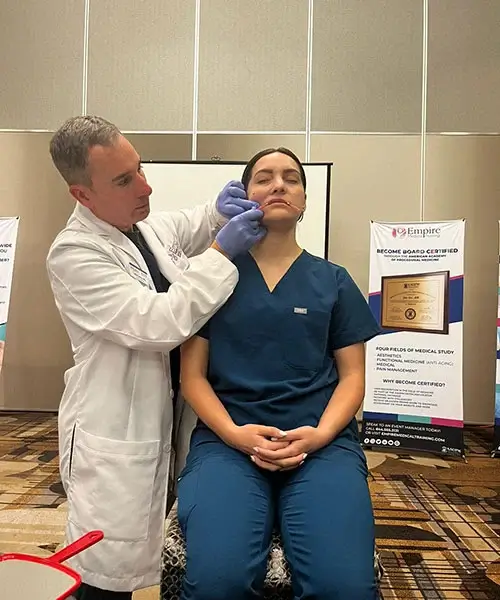What Do You Need to Become a Neurologist
By Dr. Stephen Cosentino
PRESIDENT OF EMPIRE MEDICAL TRAINING
Becoming a neurologist takes years of hard work, and it’s not the right path for everyone. But it’s also a rewarding profession that enables you to help patients every day. If you love the idea of earning a living by improving others’ lives, it’s worth considering.
Neurologists can be allopathic doctors (MDs), osteopathic doctors (DOs), or chiropractic doctors (DCs). Each path has different educational requirements and professional benefits, but all require lots of work to begin practicing.
Here’s a general overview of what’s required to become a neurologist and what to keep in mind along the way.
What Do You Need to Become a Neurologist?
Neurologists are experts in the human nervous system. Depending on their specialty, they treat a variety of neurological conditions (from chronic headache to stroke to central nervous disorders) and supervise a range of procedures, from literal brain surgery to perineural injections in-office lumbar punctures.
But we’re getting ahead of ourselves. Here’s what you need (and when you need it) to become a neurologist.
A Pre-Med Degree (Bachelor’s Degree)
First, enroll in a four-year college or university to get your pre-med degree. Most pre-med students get a bachelor’s of science degree in biology, chemistry, or another physical science discipline.
Study hard! The better your grades, the stronger your medical school application.
If you’re planning to go straight to medical school after graduating, take the Medical College Admission Test (MCAT) during your junior or senior year in college. Your MCAT score is very important for medical school admission, so you might need to take it more than once if you don’t score well the first time.
A Medical Degree From an Accredited U.S. or International School
Up next: Four years of medical school.
You can choose a U.S. or international medical school. International schools may be easier to get into, but you may be at a disadvantage when applying for competitive neurology residencies.
Medical students learn through a mix of classroom instruction and hands-on clinical rotations supervised by practicing physicians. If you’re interested in neurology, look for neurology and psychiatry opportunities.
While attending medical school, you’ll study for the medical licensing examination required to get your physician’s license. You typically take this exam toward the end of your final year.
A Residency Program in Neurology
After graduating from medical school, you’ll begin your neurology residency. This residency is usually four years long, including one year of general internal medicine work and three years of neurology-specific work.
During your residency, you’ll be a practicing physician working under a board-certified faculty team. You’ll engage in the sorts of problem solving and care development that independent neurologists do every day.
Board Certification in Neurology
The final step to becoming a neurologist is to get your board certification in the state where you plan to practice. This happens through the American Board of Psychiatry and Neurology (ABPN), the governing body for neurology practitioners in the U.S.
As a practicing neurologist, you’ll also need to complete required continuing education coursework with an accredited medical education provider. This isn’t as difficult or time-consuming as medical school, but it must be done to remain in good standing.


